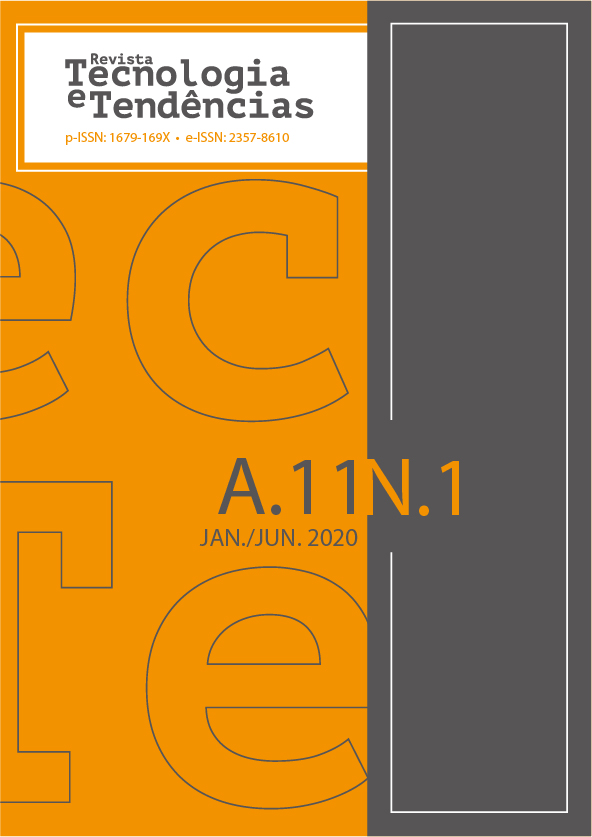MANIFESTAÇÕES PATOLÓGICAS EM EDIFICAÇÃO HISTÓRICA NO VALE DOS SINOS/RS
DOI:
https://doi.org/10.25112/rtt.v11i1.2189Resumo
RESUMO
Durante a vida útil das edificações, observa-se um processo de degradação decorrente de vários fatores. Prédios históricos, isto é, aqueles que fazem parte da história cultural do município, devem ter uma atenção especial no seu restauro, o que significa que devem passar por um processo de recuperação no qual as características originais sejam preservadas. O presente estudo tem o objetivo de identificar as manifestações patológicas encontradas em uma edificação histórica situada no bairro Lomba Grande, na cidade de Novo Hamburgo, RS, conhecida popularmente como “Casa da Lomba”. Para a identificação das manifestações patológicas encontradas nessa edificação histórica em estudo, realizaram-se vistorias in loco e, posteriormente, preencheram-se fichas cadastrais com o intuito de identificar tais manifestações, bem como um modo de recuperá-las. Na referida edificação, pode-se identificar, como manifestações patológicas mais recorrentes, trincas, descolamentos e bolores. Sendo esta uma edificação histórica, as indicações de tratamento para tais manifestações devem ser realizadas por meio de técnicas menos invasivas, visando manter as características originais da edificação. Observam-se, com maior atenção, as fissuras que ainda podem estar ativas, devendo, assim, ser feita a análise com auxílio de gesso, lâmina de vidro ou fissurômetro e, também, verificar possíveis recalques de fundação que podem ainda estar ocorrendo, para evitar que as manifestações voltem a ocorrer. Faz-se necessário um cuidado maior com o restauro, por se tratar de uma edificação com valor histórico, devendo todo o tratamento ser voltado à recuperação.
Palavras-chave: Manifestações patológicas. Restauro. Recuperação. Casa da Lomba. Lomba Grande.
ABSTRACT
During the useful life of buildings, there is a degradation process due to several factors. Historic buildings, that is, those that are part of the municipality’s cultural history, must pay special attention to their restoration, which means that they must undergo a recovery process in which the original features are preserved. This study aims to identify the pathological manifestations found in a historic building located in the Lomba Grande neighborhood, in the city of Novo Hamburgo, RS, popularly known as “Casa da Lomba”. In order to identify the pathological manifestations found in this historic building under study, on-site inspections were carried out and, subsequently, registration forms were filled out in order to identify such manifestations, as well as a way to recover them. In that building, it is possible to identify, as the most recurrent pathological manifestations, cracks, detachments and molds. This being a historic building, the indications of treatment for such manifestations must be carried out using less invasive techniques, aiming at maintaining the original characteristics of the building. We observe, with greater attention, the cracks that may still be active, therefore, the analysis should be made with the aid of plaster, glass slide or fissurometer and, also, to check possible settlements of foundation that may still be occurring, for prevent manifestations from reoccurring. Greater care is needed with the restoration, as it is a building with historical value, and all treatment should be aimed at recovery.
Keywords: Pathological manifestations. Restoration. Recovery. Casa da Lomba. Lomba Grande.
Publicado
Edição
Seção
Licença
• Os autores mantêm os direitos autorais e concedem à revista o direito de primeira publicação com o trabalho licenciado sob a Licença Creative Commons - Attribution 4.0 International (CC BY 4.0).
• Os autores são estimulados a publicar e distribuir seu trabalho online (ex.: em repositórios institucionais ou na sua página pessoal), pois isso pode aumentar o impacto e a citação do trabalho publicado.
--------------------------------------------------------------------------------------------------------------------------------
• The authors retain the copyright and grant the magazine the right of first publication with the work licensed under the Licença Creative Commons - Attribution 4.0 International (CC BY 4.0).
• Authors are encouraged to publish and distribute their work online (eg in institutional repositories or on their personal page), as this may increase the impact and citation of the published work.

